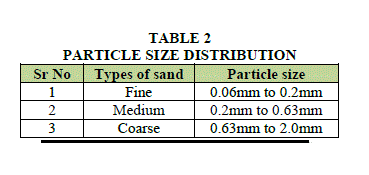ISSN ONLINE(2319-8753)PRINT(2347-6710)
ISSN ONLINE(2319-8753)PRINT(2347-6710)
George Adu1, Sylvia Adu2
|
| Related article at Pubmed, Scholar Google |
Visit for more related articles at International Journal of Innovative Research in Science, Engineering and Technology
Workers spend about six to eight hours per day sitting down while doing their institution work.Mismatch between anthropometric dimensions and consumer products may cause health problems in human body.This study aimed to investigate whether institutions furniture dimensions match with Ghanaian worker’s anthropometric characteristics in the Kumasi district of the Ashanti region in Ghana. A sample of 261 workers ( 163 males & 98 females ) ageing between 24 to59 years were selected and analyzed on the basis of their anthropometry, it was found that the five different models of furniture used were made without any anthropometric considerations and were found to be incompatible with the user population.. It is possible that the high mismatch percentage found between furniture and workers’ anthropometry can be associated to the fact that the acquisition and selection of the furniture was made without any ergonomic concern or criteria.
Keywords |
| InstitutionFurniture, Anthropometric dimensions, Percentiles, Mismatch and Ergonomics |
INTRODUCTION |
| Anthropometric data is a collection of the dimensions of the human body and are useful for apparel sizing, forensics, physical anthropology and ergonomic design of the workplace [1]. Anthropometric data vary considerably for individuals within a family or a nation and between nations [2]. Therefore, reliable anthropometric data for a target population were necessary when designing for that population otherwise the product may not be suitable for the user [3]. The use of anthropometry in design may improve the well-being, health, comfort, and safety of the user of the product [4-5]. The measurements necessary to determine the dimensions of school/institution furniture that will enable students/workers to maintain the correct sitting posture are popliteal height, knee height, buttock to popliteal length and elbow height [6, 7, 8]. Popliteal height is the main anthropometric dimension used in school/institution and other chair design and specification to determine appropriate seat height [9]. In designing a chair to suit a population, the poplitealfloor height is used to ensure that members of the population are able to sit with their feet supported on the floor, and without undue pressure behind the knees. Likewise, comparing the popliteal-floor height of an individual to the seat height of the available chairs can assist in selecting the most suitable size for that individual. Workplace furniture design and user anthropometry have become an important consideration in designing ergonomically appropriate furniture [10-11]. |
| Mismatch between anthropometric dimensions and consumer products may cause such health problems in human body as musculoskeletal disorders, concentration deficit, and so on [12]. Some studies have shown a significant mismatch between consumer products and users' anthropometric dimensions [13, 8]. To achieve the aim of the study, the authors compare public institution workers’ anthropometric measures to institution furniture dimensions and determine whether there is match or mismatch between them. |
| Ergonomics is a science that is focused on the study of human fit, and decreased fatigue and discomfort through product design [14]. Ergonomics combine the knowledge obtained from the study of anatomy (structure of the body), psychology (the study or science of the human mind), physiology (the study of the way in which living bodies work) and anthropometry (the science of the measurement of human bodily dimensions as they relate to the three dimensional space in which the human operator works) to reduce the stress, improve performance, and reduce or eliminate hazards [15]. |
MATERIALS AND METHODS |
| The study areas are the three institutions: Kwame Nkrumah University of Science and Technology, Kumasi Polytechnicand Ministry of Lands and Natural Resources (made up of Forestry commission, Survey department and Lands commission), all in the Kumasi district of the Ashanti Region in Ghana (Figure 1). |
 |
| Figure 1: Study Areas |
| Kwame Nkrumah University of Science and Technology is situated N6.675267 and 1.565422W, Kumasi Polytechnic N6.691119 and W 1.610098, Forestry Commission N 6.688665 and W1.624343, Survey Department, N 6.69195 and W 1.624628, Lands Commission N 6.690225 and W 1.624283. All public workers in the studied institutions were approached and consents were sought from both institutional heads and workers before the data collection. In the institutions, measurements were collected in the administration building from administrative staffs.A total of 261 (163 males, 98 females) subjects were used in the study. All measurements were taken in relaxed sitting positions. The unit for all the measurements was millimetre. The institution office furniture used consisted of four models of desks and one model of chair (Figure 2). |
 |
| To consider whether there was mismatch between anthropometric and furniture measurements, Table 1 is used [7]. In the case of desk width and depth, no criteria were defined to compare with the anthropometric measure. Mismatch data is determined if the furniture dimensions are outside the mismatch decision: lower or shorter than minimum value and higher or taller than maximum value.Measurements of furniture taken in the offices (at the point of use)included seat height, seat depth, seat to desk height, backrest height, desk clearance, seat width and desk height [16]. Seat height (i.e. popliteal height), seat depth (i.e. buttock popliteal length), desk clearance(the vertical distance from the floor to the bottom of the front edge of the desk), maximum functional elbow height and maximum acceptable desk height are the common measurements considered in furniture design based on ergonomic principles [7]. Both measurements (furniture and anthropometric) took place at the same time. |
 |
 |
| Table 3 shows that seat height, which should be considered as the starting point for the design of office furniture, was appropriate for workers’ popliteal-floor height in only 29%, 9% and 4% of Kumasi Polytechnic, Ministry of Lands and Natural Resources and Kwame Nkrumah University of Science and Technology respectively. Desk height was too high and mismatched 62%, 94% and 82% of the workers in the same order of institutions as stated already. Therefore, it was possible to conclude that the office’s furniture was inadequate in almost all the analyzed cases and subjects There are many variations in body size among adults. The body dimensions should match with the furniture used in offices. Therefore, desks and chairs of different sizes should be made available to fit different adults. However, this is often difficult to do for a variety of organizational reasons. Provision of adjustable chairs and desks might appear a suitable solution, but some workers might have great difficulties in adjusting that furniture to their size and liking [17]. Moreover, adjustable seats and desks are costlier than the ordinary one. Many countries are unable to provide such furniture because of financial reasons. Therefore, it will be suitable to make fixed design of office furniture considering the anthropometric data of office workers. |
| Literature revealed that mismatch of high seat height may result in some of the workers not able to support their feet on the floor, generating increase tissue pressure on the posterior surface of the knee [18] which may discomfort and restrict blood circulation; or unnecessary spinal lean if too low [19]. Both shallow and deep seats were encounted in the study. For shallow seats, workers’ thighs would not be supported enough and would generate discomfort [18], while in too deep seats, workers cannot avoid the compression on the posterior surface of the knee and workers will place their buttocks forward on the edge of the seat [20], causing kyphotic postures due to the wrong use of the backrest [18]. According to researchers, a good backrest, fitting the natural spinal curves, stabilizes the spine, facilitates lumbar lordosis and reduces kyphotic postures [21]. |
| For desk clearance and knee height, there were hundred percent matches. The situation of match does not produce mobility constraint because of no contact of the knees with the desk [18]. In this particular study, the considered match criterion for the desk clearance was the knee height plus 20 mm. |
| As a result of mismatch between desk height and elbow rest height, workers are required to work with shoulder flexion and abduction or scapular elevation, causing more muscle work load, discomfort and pain in the shoulder region [18]. This situation will force workers to lift their arms and shoulders while writing. Also mismatch in elbow to seat height and desk height is significantly related to inappropriate sitting [22]. It is as a result of chair not designed in conjunction with the work surface. Inappropriate desk height refers to both the desk which is above and below compared to elbow rest height. Inappropriate desk height can cause elbow, shoulder and neck pain. |
CONCLUSION |
| On the basis of the type of workers in the public institutions, obtained results and their analysis, the following conclusions can be drawn: |
| • Very high seats were found in the three institutions. |
| • Majority of the workers’ desk were high. |
| • It is possible that the high mismatch percentage found between furniture and workers’ anthropometry can be associated to the fact that the acquisition and selection of the furniture was made without any ergonomic concern or criteria. |
| • The study recommended accepted limit of minimum and maximum institution furniture dimensions which could match with worker’s anthropometric dimensions. |
RECOMMENDATIONS |
| • Owing to the use of ill designed furniture, public workers may face many problems as fatigue, muscular stress and pain/discomfort in different body part. |
| • Chairs of appropriate seat height should be provided to workers in all the institutions. |
| • All administrative staffs should be provided with appropriate desks height required to work to avoid shoulder flexion and abduction or scapular elevation, causing more muscle work load, discomfort and pain in the shoulder region |
| • There should be the introduction of the compulsory biannual anthropometric measurements in all public institutions for provision of preliminary data that will help the authorities and manufacturers equip offices with appropriately dimensioned furniture. |
References |
|